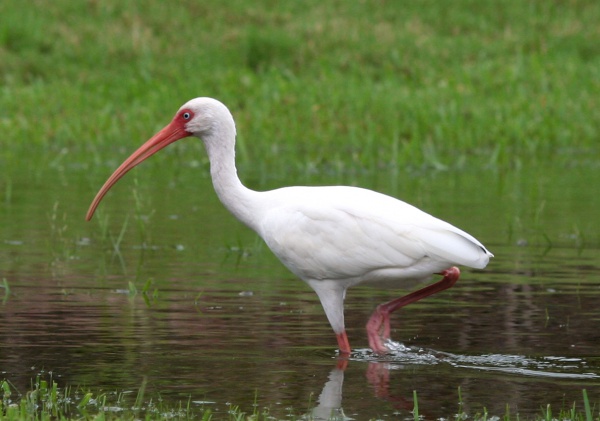Facts About American white ibis
The American white ibis is a captivating bird belonging to the ibis family, Threskiornithidae. These medium-sized birds can be found from Virginia along the Gulf Coast of the United States, extending to the coastal regions of the New World tropics. They are easily identifiable by their striking white plumage, long red-orange curved bills, long legs, and the black tips on their wings observable in flight.
Preferring to breed in colonies along the Gulf and Atlantic coasts, their range extends to Mexico, Central America, the Caribbean, Colombia, and Venezuela. Their diet primarily consists of small aquatic creatures such as insects and fish, with a particular preference for crayfish.
During the breeding season, American white ibises form large colonies near water. They are predominantly monogamous, although males occasionally engage in extra-pair copulations to enhance their reproductive success. Unfortunately, human pollution, especially exposure to methylmercury, has adversely affected their behavior and breeding success. This toxic substance disrupts their hormones, leading to altered mating and nesting behaviors and reduced reproduction rates.
First described by Carl Linnaeus in 1758 and later classified in the genus Eudocimus, the American white ibis is at the center of an ongoing debate about whether it should be considered a separate species from the scarlet ibis, given their ability to interbreed. Males are generally larger than females, demonstrating sexual dimorphism in size and proportion.
These birds are found from Florida to Venezuela, with their breeding colonies moving according to water levels and prey availability. They are known for forming large breeding colonies that can quickly disband and reassemble elsewhere. Fossil records indicate that similar species existed in the past.
American white ibises display interesting behaviors such as territoriality, foraging by tactile probing, and even stealing food from other nesting parents. Their breeding success is closely linked to hydrological conditions, with nest abandonment due to flooding being a major cause of failure. They face threats from various parasites and predators, including worms, protozoa, mites, and lice.
Despite these challenges, the American white ibis is classified as "Least Concern" on the IUCN Red List, with a stable population of around 150,000 mature adults. Conservation efforts focus on preserving their colony sites and freshwater foraging areas. Historical hunting and current pollution, particularly from methylmercury, have impacted the species.

 Guatemala
Guatemala